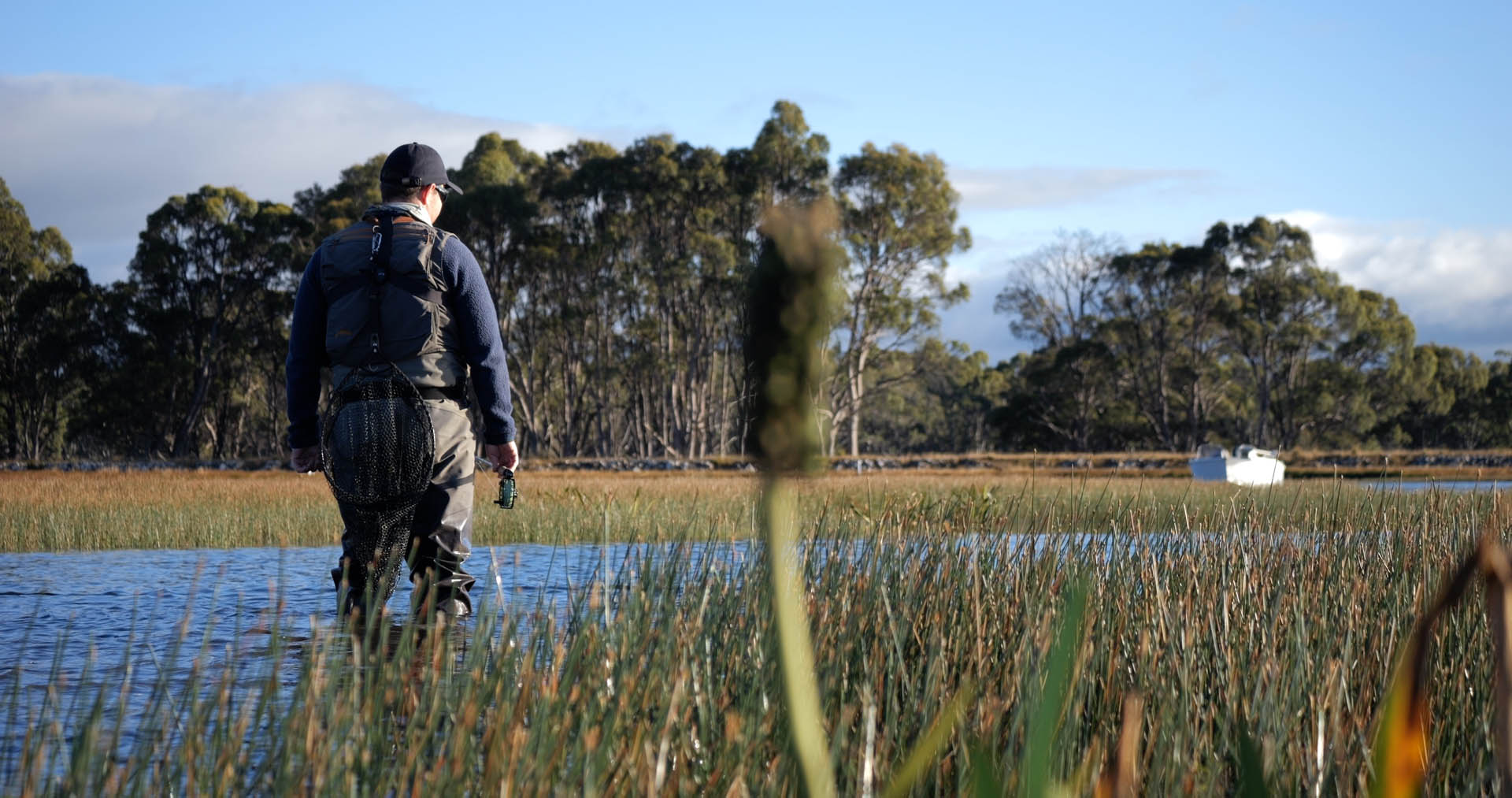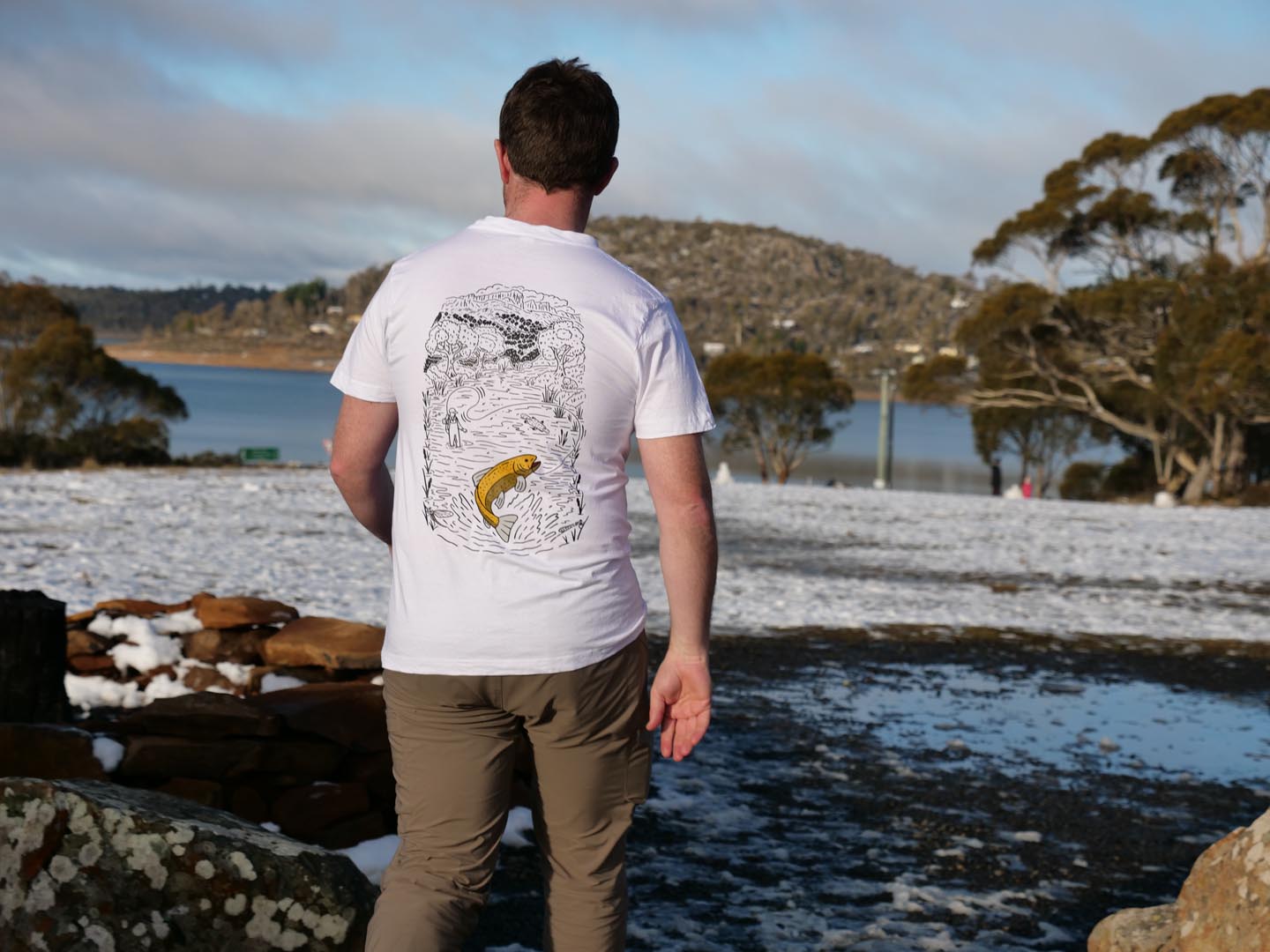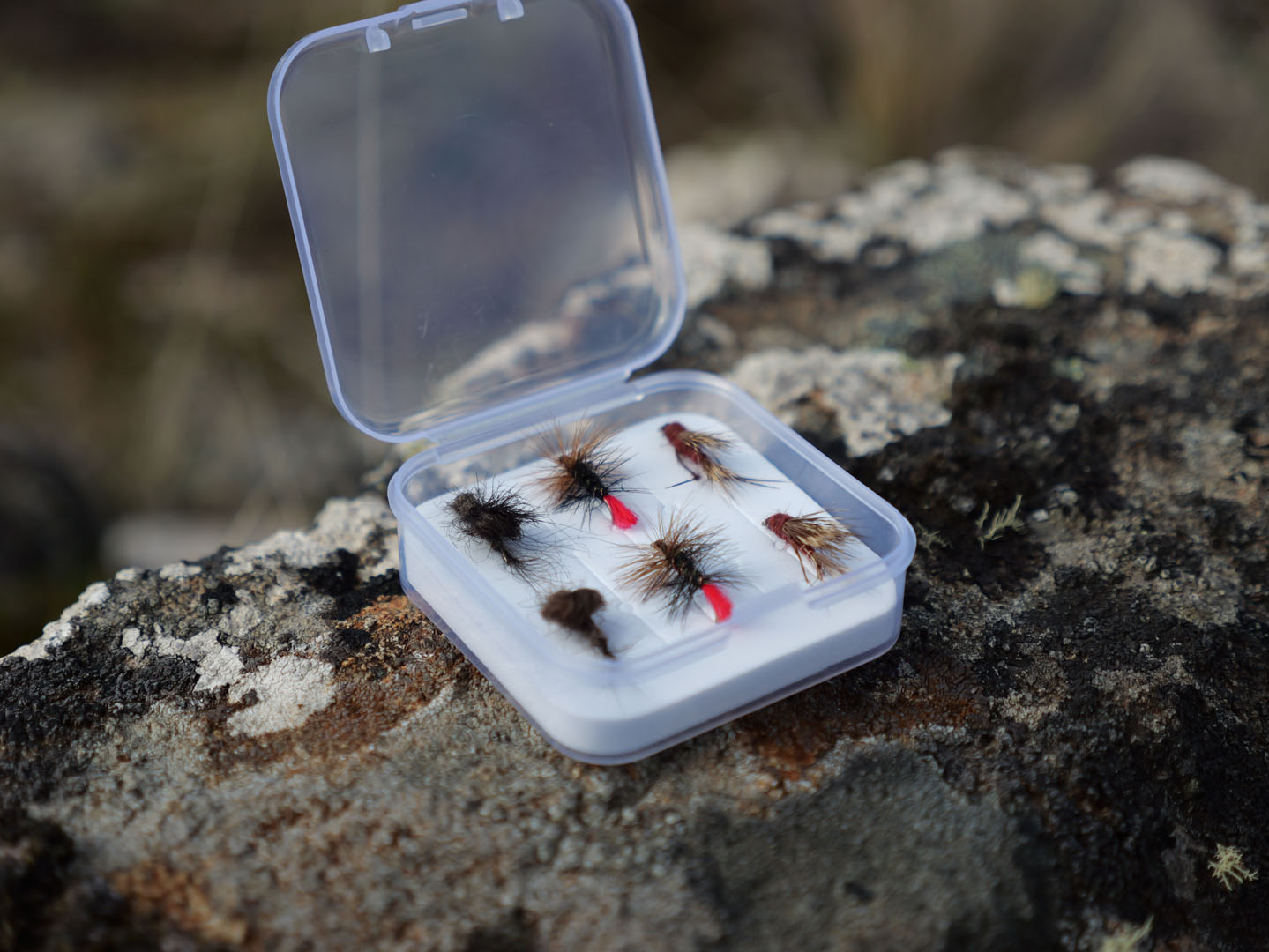Discover Tasmania’s best dry fly fishing with our mega guide - covering when to go, essential gear, fly patterns, and expert on-water tips from Trout Tales Tasmania.
Dry fly fishing on Tasmania’s rivers is one of the purest joys in the sport - a blend of precision, patience, and immersion in nature.
Walking slowly upstream, spotting a wild brown trout sipping midges, and dropping the right fly perfectly ahead of it is as close to magic as fly fishing gets.
In this guide, drawn directly from Matt’s on-stream video session, we break down everything you need to know to make the most of Tasmania’s dry-fly season.
From when to go and what to bring, to how to approach fish and refine your presentation.
Watch The Video
Continue reading our mega guide below, or sit back and watch everything you need to know about dry fly fishing Tasmania's rivers in our masterclass feature video.
When to Go: Finding the Perfect Window
While trout season officially runs from August to April, the prime dry-fly period is between January and April, when warm, settled weather delivers everything a surface angler dreams of.
Long, sunny days bring out a mix of aquatic and terrestrial insects - from delicate caddis and mayfly to grasshoppers and damselflies - and lower water levels make spotting and wading much easier.
These calm conditions allow for accurate, gentle presentations. Light winds help your leader turn over cleanly, while clear skies make it easier to see both your fly and the trout.
On warmer afternoons, look for rises near shaded banks and willow edges where terrestrials drift onto the water.
If you’re planning a summer trip, our Fly Fishing Tasmania: Ultimate Guide has details on seasonal conditions and nearby waters to combine with your dry-fly sessions.
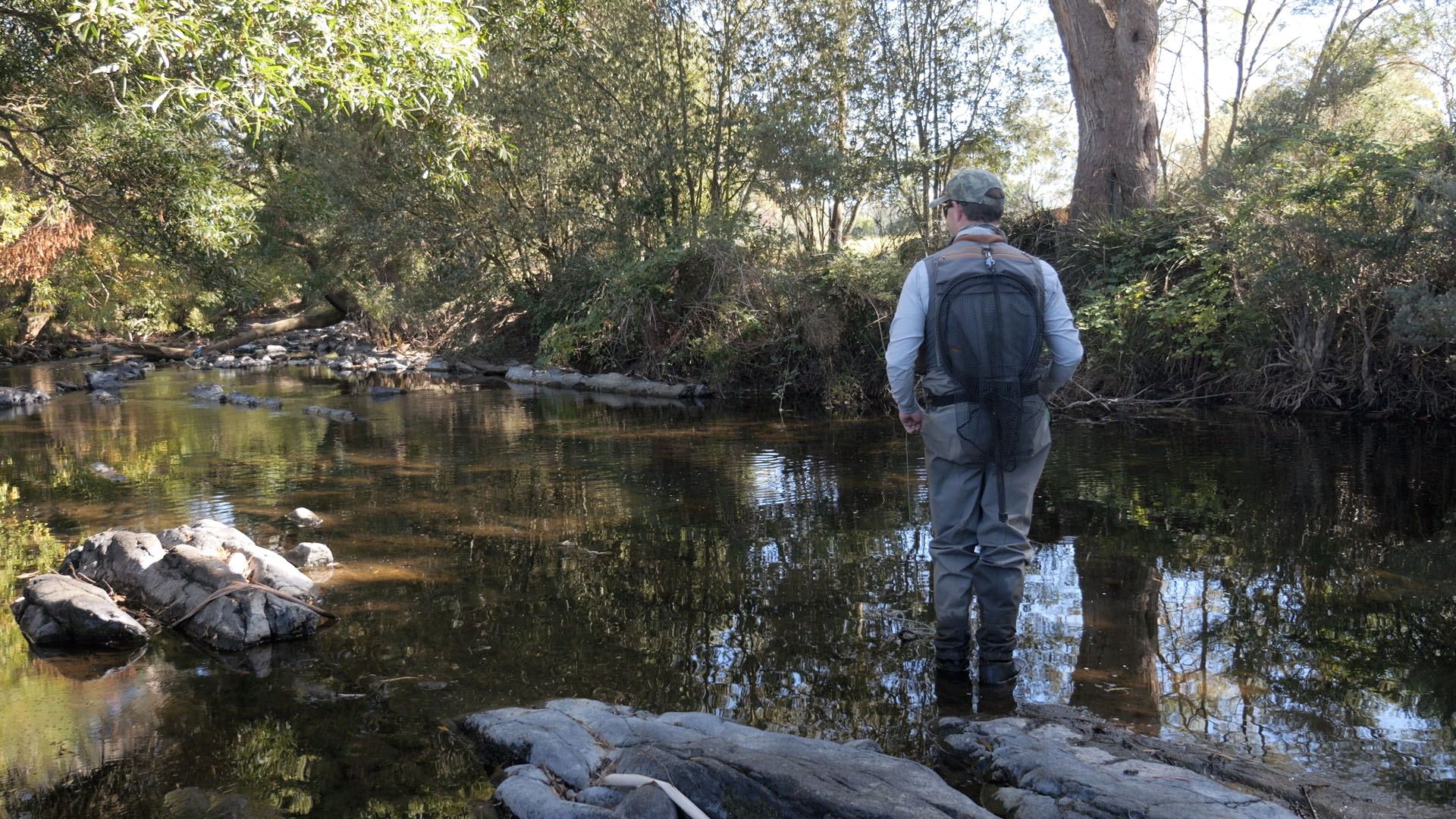
Essential Gear Setup
One of the great things about dry-fly fishing in Tasmania is its simplicity - you don’t need a mountain of gear, just a few key pieces that work together perfectly.
- Rod & Reel: A light rod between 3–4 wt (around 8–9 ft) is perfect for Tasmania’s small to medium rivers. Matt uses an 8 ft 4 wt with a matching floating line, ideal for quick, accurate casts and soft presentations.
Pair it with a smooth, lightweight reel - the drag doesn’t need to be heavy, but it should be reliable for larger browns that occasionally surprise you. - Line & Leader: A weight-forward floating line is all you need for surface fishing. Attach a 9 ft 5X tapered leader for most conditions, and carry a few spares in 6X (≈ 4 lb) and 7X (≈ 3 lb) for ultra-clear or slow-flowing water.
Lengthen your leader if fish are spooky, or shorten it slightly for tighter casting under willows and structure. - Flies: Keep it simple with proven patterns that consistently fool Tasmanian trout - the F-Fly, Parachute Adams, Flying Ant, and Grasshopper will cover 90 % of scenarios.
Choose natural tones like olive, brown, or black, and pick versions with visible posts (white, pink, or orange) so you can track them in bright light. - Accessories: A good vest or pack to keep fly boxes, tippet spools, floatant, nippers, and forceps within reach. Polarised sunglasses are a must for spotting fish and reducing glare.
Lightweight waders or long pants protect against blackberry thickets and offer comfort when wading through grassy or shallow sections.
For locally tested setups, check out our Online Fly Fishing Shop
Accessing the Rivers
Tasmania’s river network is incredibly accessible thanks to the Inland Fisheries Service Angler Access Program.
Look for the brown angler access signs - these mark legal entry points to rivers like the Tyenna, St Patricks, and South Esk.
Every site is mapped in the InFish App and in downloadable brochures on the IFS website.
Many access points pass through farmland, so it's also important to show respect for private property by staying on marked tracks and closing gates.
Matt's Tip: If you’re exploring new water, take time to check river levels and flows before setting out.
Some smaller streams fish best at moderate flow, while larger systems like the Derwent or South Esk can vary significantly after rain.
A quick look at online flow gauges or recent reports on our Tasmanian fly fishing blog can help you decide where to go.
Parking safely off the roadside, avoiding stock areas, and walking quietly to the bank all contribute to keeping access open for everyone.
Combining a few rivers into a single trip - for example, fishing the Tyenna River in the morning and a Derwent tributary in the afternoon - is an excellent way to see more water and adapt to changing weather or insect activity.
Most of these locations are also within easy reach of Hobart or Launceston, making them perfect for day trips or weekend getaways.

Technique and Approach
Dry-fly success in Tasmania relies less on gear and more on stealth, patience, and accuracy.
Start by walking upstream, as trout always face into the current. Approach from behind, keeping a low profile, and avoid splashing or shifting rocks as you move.
Polarised sunglasses are essential for spotting trout holding in slow glides or bubble lines.
When casting, stay organised - keep your loose line drifting gently behind you to avoid tangles. Aim to land your fly three to five feet ahead of a rising fish so it drifts naturally into view.
Use minimal false casts; often, one clean pick-up and lay-down is enough.
Pay close attention to how your fly lands. Smaller patterns should touch down softly with a straight leader and natural drift. However, on windy days with hoppers or damsels, a slightly louder “plop” can actually trigger a reaction strike.
If you miss a fish or get refused, wait a few minutes before the next cast. Trout often resume feeding once the water settles.
Want to see these techniques in action? Join Matt on the water for a hands-on dry fly session - learn how to spot, stalk, and present with precision.

Fly Selection in Practice
Choosing the right fly on Tasmania’s rivers often comes down to matching two things - the size of the insect and the behaviour of the fish.
When trout are feeding confidently near the surface, presentation matters more than the exact pattern. But having a few proven favourites ready in your fly box makes all the difference when the rises start.
Here are Matt’s go-to patterns from our recent dry-fly sessions - all simple, visible, and effective across Tasmania’s major rivers:
- F-Fly: A lightweight caddis imitation that excels in calm pools, gentle glides, and slower tailouts. It sits low on the film, making it perfect for fish sipping subtle insects. The F-Fly is particularly effective on the Tyenna and St Patricks Rivers during late-morning hatches. Use a small size 16–18, and apply minimal floatant so it rides naturally.
- Flying Ant: One of the most reliable summer patterns in Tasmania. When ant falls happen, often after warm, still mornings - trout loose all caution and feed heavily. A small size 16-18 ant with a dark body and a visible post can turn quiet water into chaos. Keep a few spare patterns handy, as they can be easily damaged after multiple takes.
- Parachute Adams: The all-rounder. Ideal when you’re unsure what the trout are feeding on, or when multiple insects are hatching simultaneously. Its upright post makes it easy to track, and the neutral grey hackle works in bright or overcast light.
A size 14-16 Adams will cover most situations, particularly on clear rivers like the upper Derwent.
- Grasshopper: The ultimate summer terrestrial. Use this in hot, breezy conditions when hoppers tumble from the banks. Cast tight to grassy edges or under low branches, and don’t be afraid to let it land with a slight “plop” to mimic a real insect.
A short twitch of the rod tip can often trigger an immediate take. Larger patterns (size 10-12) also double as excellent searching flies when there’s no obvious rise.
When trout are ignoring larger offerings, switch down to smaller emergers like a CDC Caddis or midges. Focus on presentation and drift first - the right fly, poorly delivered, won’t fool a fish in clear water.
If you’re building a fly box for the Tasmanian season, check out our Flies & Boxes for local patterns tied specifically for locations such as the Tyenna, Derwent, and highland streams.
Matt's Tip: Keep a few flies two sizes smaller than you think you’ll need. Tasmanian trout can become selective in low, clear water - and downsizing from a size 14 to a size 16 or 18 often turns refusals into confident takes. It’s one of the simplest adjustments that can completely change your day.
Putting It Together: A Classic Day on the Tyenna
A perfect Tasmanian dry-fly day starts mid-morning once the sun is on the water.
Begin at a slow, gliding run, watch for subtle sips in bubble lines, and cast short, accurate drifts with a size 16 F-Fly.
As the day warms, you might switch to a Flying Ant or small hopper and target shaded banks and willow edges.
Move slowly between runs, staying low and scanning for movement rather than charging ahead. When you hook a fish, take a moment to enjoy it - then let the water rest before continuing upstream.
Ready to get in on the action? To experience these waters firsthand with expert guidance, explore our Guided Fly Fishing Tours.
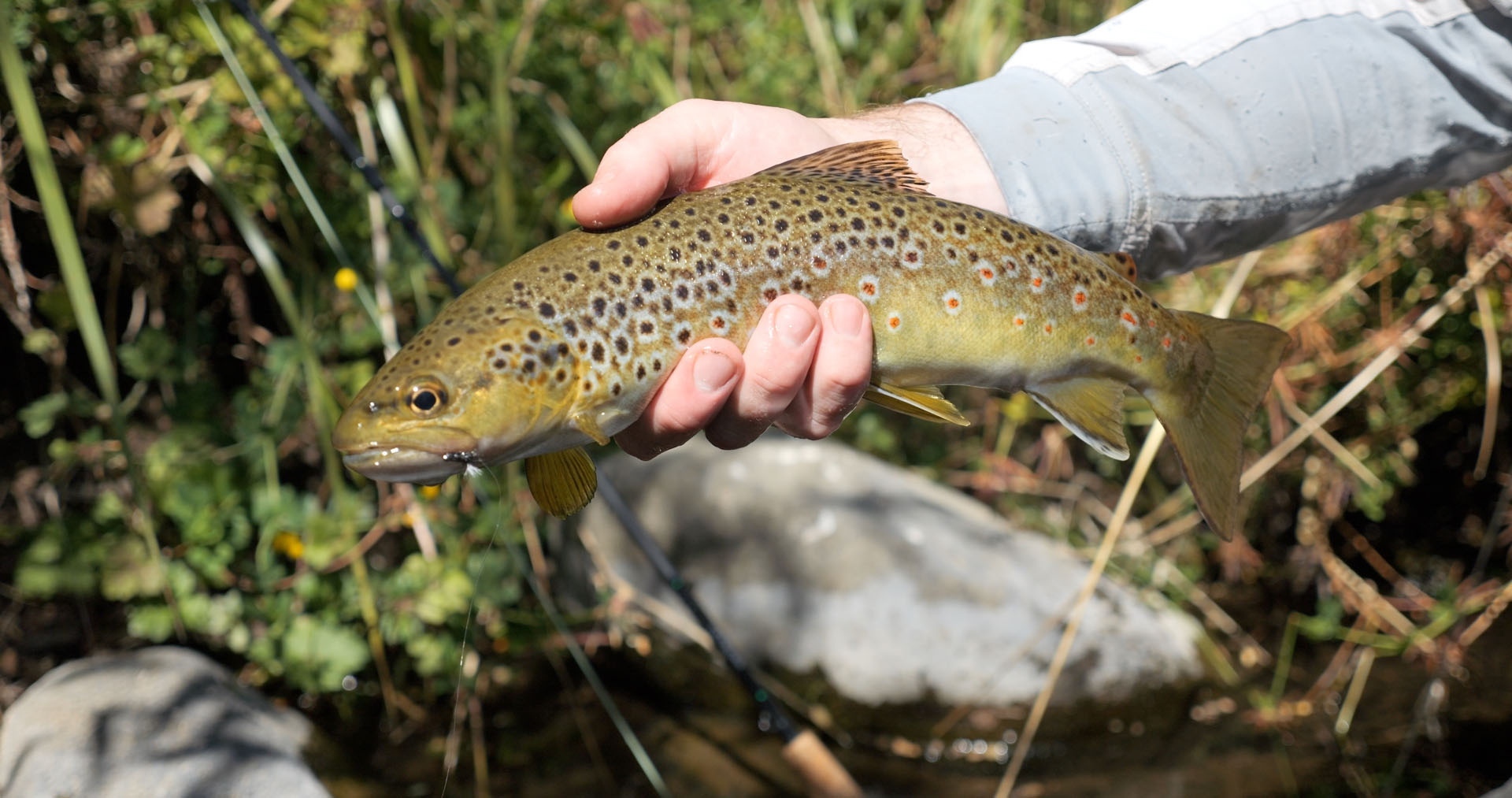
Final Thoughts
Dry fly fishing in Tasmania is a slow, deliberate dance with nature; both in and out of the water.
With just a light rod, a handful of patterns, and quiet confidence, you can experience world-class fishing on rivers like the Tyenna, St Patricks, and Derwent.
Combine this written guide with our Dry Fly Fishing Tasmania Masterclass Video to see each step in action - from spotting fish to making that perfect drift.
And if you’re ready to refine your skills on the water, book a Trout Tales Guided Fly Fishing Trip and learn directly from the locals who fish these rivers every day.
Ready to plan your trip?
We’d love to help you experience Tasmania’s rivers at their best. Visit our Contact Page to chat about conditions, trip options, or personalised recommendations.
Whether you’re after a one-day river session or a multi-day Tasmanian fly-fishing adventure, we’ll make sure it’s tailored perfectly to you.
Feature Posts
Ready to book A trip?
Experience all of what fishing in Tasmania has to offer through a personalised fly fishing tour.
Book Now



